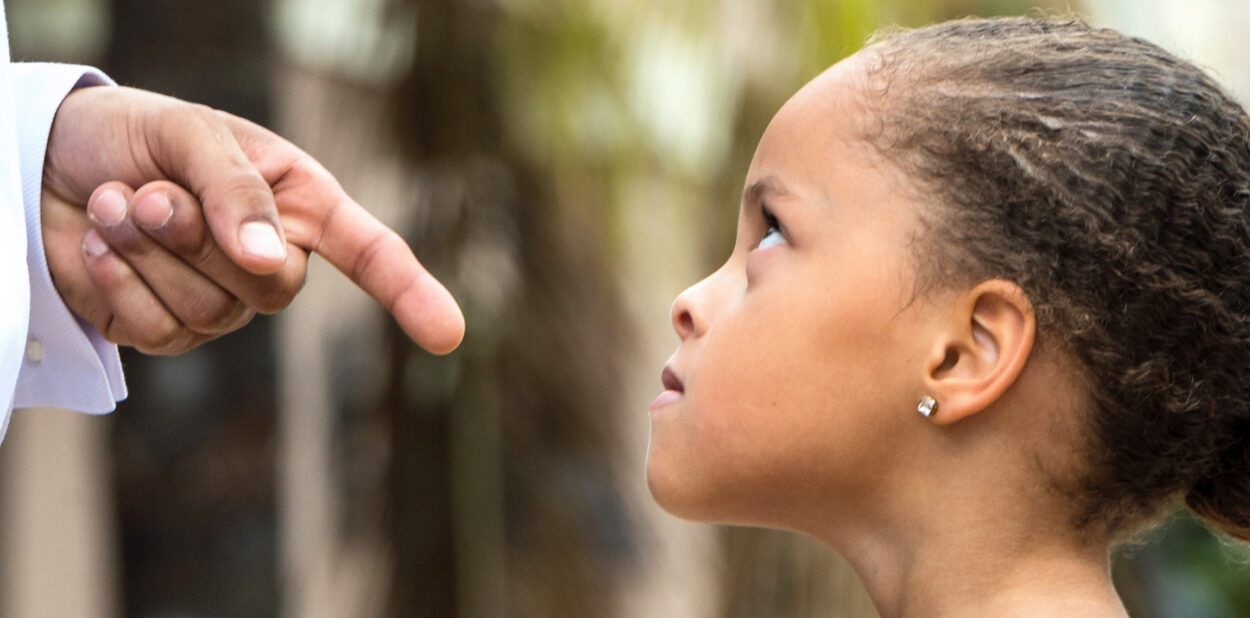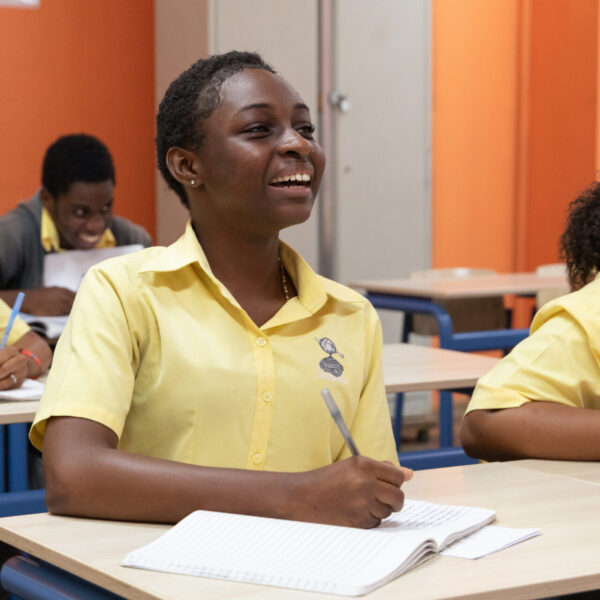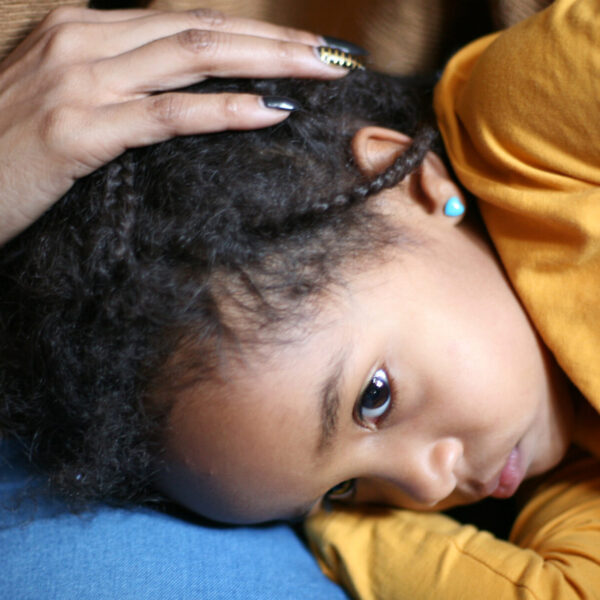On Sint Maarten most parents still believe in the proverb: “Spare the rod, spoil the child.” However, since 2013, Sint Maarten has a clear law on corporal punishment: it is not allowed at home, school or any other setting.
“Research continuously shows that violence begets violence.”
Some might not be used to disciplining their kids any other way than physically, but not only is this against the law, there are many more effective and safer forms of discipline.

“People either don’t know there is a law or they don’t care,” states Guicindy Glascow, who works with many parents through the Family Guardianship Department. According to her, corporal punishment is still the most prevalent form of discipline used on Sint Maarten.
In general, corporal punishment means: to cause physical pain or discomfort to correct or control a child’s behavior. This is often done by spanking or slapping the child with an open hand, striking with an instrument such as a belt, spoon, shoe, hairbrush, paddle.
It can also include shaking, pinching, forced ingestion of substances such as soap, or forcing children to stay in uncomfortable positions for prolonged periods.
Guicindy: “In the Caribbean we were raised with corporal punishment. Often people tell me: but my mother spanked me and I turned out fine. We respond: spanking, shaking, pinching; it is all abuse.”
“There is no shame in asking for advice if you need help figuring out alternative parenting techniques”
Escalation
Despite the perceived belief that physical punishment is an acceptable parental choice for discipline, research continuously shows that violence begets violence. Negative effects of corporal punishment can include physical injury, depression, anxiety, learning difficulties, anti-social behavior and increased aggression both as a child and into adulthood. The use of corporal punishment can also increase in severity in stressful situations and escalate to heavier abuse such as kicking, punching, biting, scalding and burning.
“And as we all know, we do what our parents taught us. So if you are hitting your kids, they will hit their kids in the future. Consequently, it is hard to explain to parents that using corporal punishment is unhealthy for their children. They are often not very receptive to learning other discipline techniques,” Guicindy adds.
In actuality, corporal punishment does not work. It can work momentarily to stop problematic behavior because children are afraid of being hurt, but it doesn’t change behavior in the long term. The use of physical punishment also affects the relationship between child and parent, resulting in distrust and resentment, which can make it even harder to control a child’s behavior as he/she is growing up.
No repercussions
Based on UNICEF’s data children from wealthier households are equally likely to experience violent discipline as those from poorer households. Also, Guicindy and her colleagues note that there are professionals that work with children who still use or condone corporal punishment as well: “I’ve had cases where we had given warnings about the use of corporal punishment. But only when it got life-threatening, the police would step in. In addition, there are often no real repercussions for those who resort to corporal punishment.”
As professionals, especially those working with children, it is important to be aware of the negative consequences of using corporal punishment. It is also important to understand the law regarding corporal punishment and to uphold this in your daily practices as well as when advising parents.
There is no shame in asking for advice if you need help figuring out alternative parenting techniques.
More open communication
If corporal (and emotional) punishment is not an acceptable or effective form of discipline, what are the alternatives? More effective and safer forms of discipline are: open verbal communication highlighting bad and good behavior, taking away privileges such as a toy (never a basic need such as a meal), or giving a time-out. Having children help to solve the bad behavior can also work, for example: if they break something, ask them to help clean it up. Lastly, often forgotten, using praise when a child does something good is also important in showing the difference between wanted and unwanted behavior.
“Although we need more programs on the island, there are parenting classes available through the Student Support Services Department and Women’s Help Desk. There is no shame in asking for advice if you need help figuring out alternative parenting techniques. This just makes you a good parent,” Guicindy encourages. Reputable websites such as Healthychildren.org are also a good starting point.
Guicindy hopes that with education, awareness campaigns, and with a rising awareness of the law, the mentality on our island will start shifting from realizing that “just because our parents did it, it doesn’t mean it is right.”
6 popular misconceptions of corporal punishment
1. Physically punishing children teaches them how to behave
There are no studies that prove that corporal punishment works. However, over 250 studies have proven that corporal punishment is associated with a wide range of negative health, developmental and behavioral outcomes such as poor mental health, poor cognitive development, lower school grades, increased aggression, poor moral regulation and increased antisocial behavior. These effects often follow children into adulthood.
2. A loving smack doesn’t really hurt
Adults often don’t appreciate the difference in size and strength between them and a child. This difference can have a big impact on the intended and actual physical pain felt by the child. Large scale research in which parents have been asked about the force used when “smacking” their child found that two in five had used a different degree of force than intended.
3. My parents used to hit me and I turned out OK.
Many people are denying the hurt they experienced when the adults closest to them inflicted pain as a ‘lesson’. Adults who hit their children in the name of discipline usually began doing so because they themselves were hit as children. It is pointless to blame previous generations for this because they were acting in accordance with the prevalent culture of that time. But times change and societies move on. We have enough research now that shows corporal punishment does not work and has negative effects. There are also plenty of proven alternative techniques that work better.
4. “Spare the rod, spoil the child.”
Discipline grows from understanding, mutual respect, tolerance, and two way effective communication. Corporal punishment tells children nothing about how they should behave. On the contrary, it teaches children that their parents find it acceptable to use violence to sort out problems or conflicts. Respect should not be confused with fear. Good behavior due to fear of being hit means that a child is avoiding pain, not showing respect.
5. There is a difference in ‘safe spanking’ and child abuse
Lawmakers and governments have traditionally separated ‘child abuse’ and ‘corporal punishment’, but most abuse is corporal punishment – adults assaulting children to punish them and gain control. The well-known ‘pedagogische tik’ (safe spanking) can easily derail under pressure and more importantly: where do you draw the line? No such threshold is proposed in the case of violence against elderly people, where zero-tolerance clearly states that all violence is unacceptable. In reality, it is not possible to differentiate between child corporal punishment and abuse.
6. A law against corporal punishment is pointless
From international research we know that a clear law (like St Maarten has) in combination with public campaigns, is related to significantly reductions in violence against children, and violence committed by children as well.
The Law on Corporal Punishment
Law reform following the achievement of autonomy in 2010 included the Joint Custody Ordinance 2013, which amends article 247 of the Civil Code to state (unofficial translation): “(1) Parental authority includes the duty and right of the parent to care for and raise his or her minor child. (2) Caring for and raising the child includes care and responsibility for the mental and physical wellbeing and safety of the child and the development of his or her personality. In the care and upbringing of the child the parents will not use mental or physical violence or any other degrading treatment.”
The article also applies to all persons acting in the place of a parent. Corporal punishment is punishable under the Penal Code 2012. In May 2012 the Joint Court of Justice of Aruba, Curaçao and St Maarten, in a case in which a crèche employee had been summarily dismissed after striking a child with the permission of the mother, ruled that hitting children will not be tolerated, and that anyone who does so will be punished. (Source: Corporal punishment of children in St Maarten, End Corporal Punishment, October 2017 (link: http://www.endcorporalpunishment.org/wp-content/uploads/country-reports/StMaarten.pdf)



